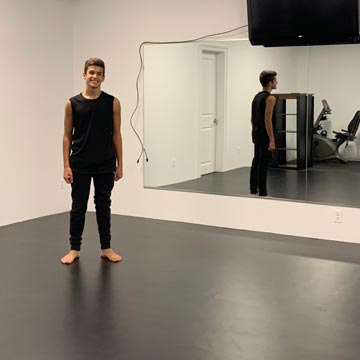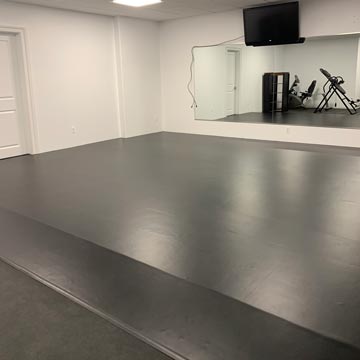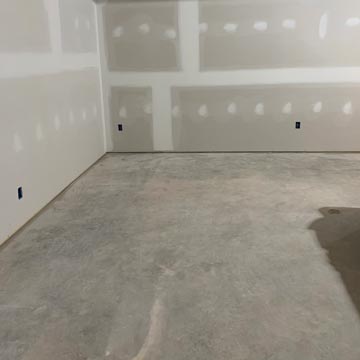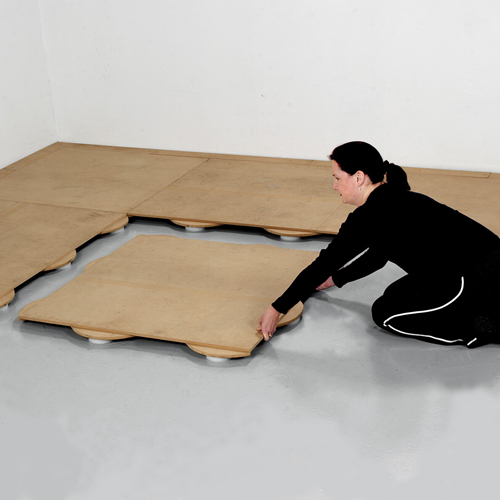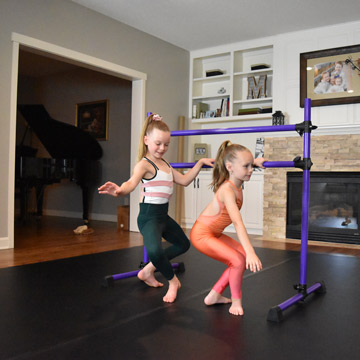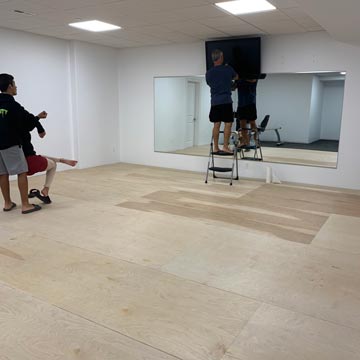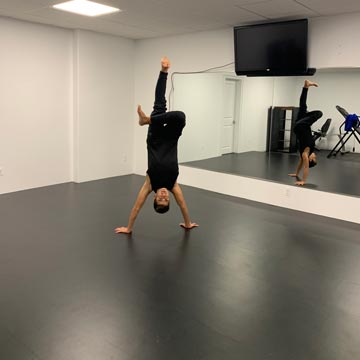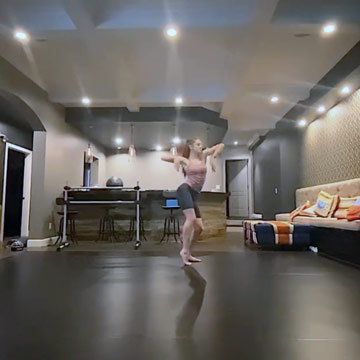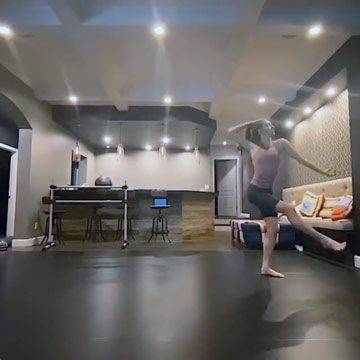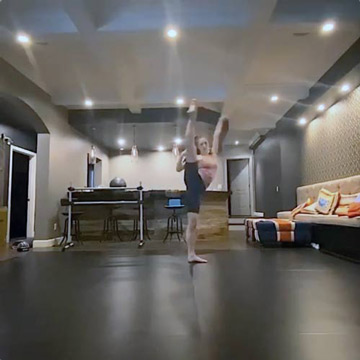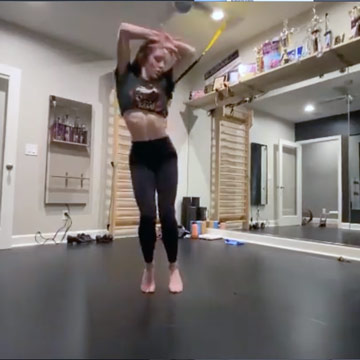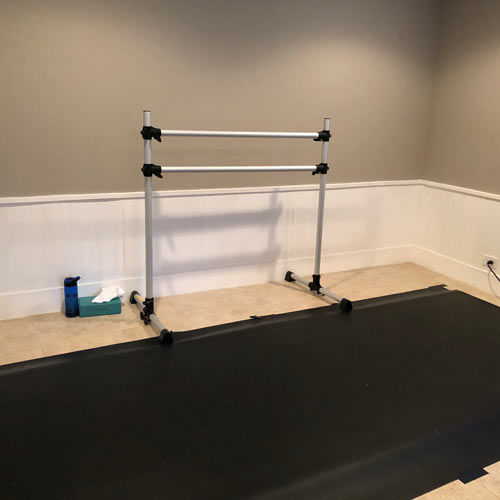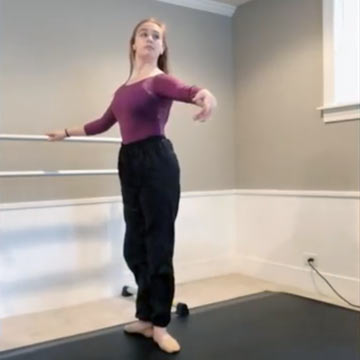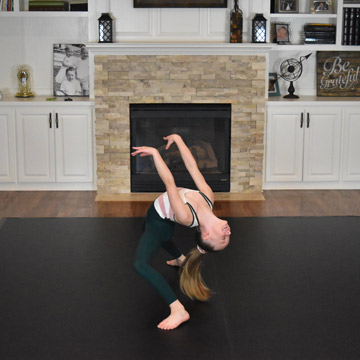What's the Best Basement Dance Studio Flooring?
Related Product: Rosco Adagio Marley Custom Cut Per LF
With the right marley flooring in use in a basement dance studio, students can stay safe during practices, as marley allows for freedom of movement, while also delivering just the right amount of traction to make the desired movements without slipping.
Another reason why marley is popular as a best basement dance studio flooring option is because it has excellent versatility. It can support dancers involved in multiple types of dance workouts, including practices with shoes or without shoes.
Marley works well for a DIY project, as it’s thin and easy to cut. Customers can also order a custom cut length to fit the space available. Some installers will choose to install a subfloor underneath the marley to add a bit of cushioning or support. The number of installation ideas for the build are nearly endless.
Here are four customer testimonials about creating an at-home studio for dancing in a downstairs area of the house.
Is Marley Flooring Versatile for Multiple Dance Styles?
Marley flooring is a popular selection among customers seeking to create a basement dance studio, as it works for many different kinds of dance practice. When a student needs to practice multiple dance types at home or is taking Zoom classes for various dance styles, marley is an excellent choice.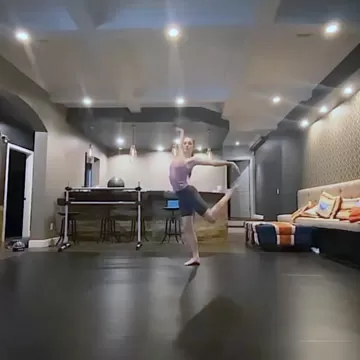 For the Enscoe family in Cincinnati, installing a dance floor at home had to be able to support styles like ballet, jazz, tap, hip hop, and ballroom dancing.
For the Enscoe family in Cincinnati, installing a dance floor at home had to be able to support styles like ballet, jazz, tap, hip hop, and ballroom dancing.
The family recently decided to turn a 15-by-15-foot space in the basement into an area for dance practice, providing enough room for freedom of movement with the durable Rosco Adagio Marley Custom Cut flooring.
“I am lucky to have plenty of space, but I was dancing on stained concrete floors in my basement,” Braylan Enscoe said. “After just a few weeks I felt it in my ankles and knees, and it wasn’t smart or safe. … I decided on this type of marley because I wanted a marley [where] I could dance barefoot or in my ballroom or tap shoes.”
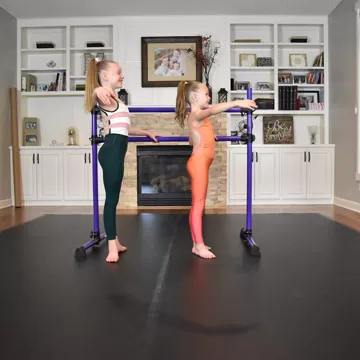 The Manzel family of Lake Elmo, Minn., followed a similar route when it used the Home Dance Floor Package Adagio Tour Basic marley to create a 10-by-10-foot dance practice space in a basement bedroom and a 12-by-12-foot space in the living room. The marley dance flooring was secured with tape the edges and seams over the hardwood living room floor and laminate basement flooring.
The Manzel family of Lake Elmo, Minn., followed a similar route when it used the Home Dance Floor Package Adagio Tour Basic marley to create a 10-by-10-foot dance practice space in a basement bedroom and a 12-by-12-foot space in the living room. The marley dance flooring was secured with tape the edges and seams over the hardwood living room floor and laminate basement flooring.
The two daughters in the family appreciate having a significantly more comfortable space for practicing with the marley versus the hardwood and laminate floorings they used previously. Creating a separate dance space for each daughter made practice time more efficient.
“We started with pushing our furniture out of the way,” mother Katie Manzel said. “But they needed more room, so we actually sold a lot of our furniture and just turned our living room into a dance space, and then we also turned a spare bedroom downstairs into a dance space.”
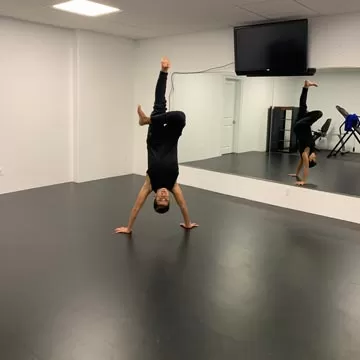 The Rassi family in Bel Air, Md., wanted to create a similar space for son Jacob as a basement dance studio. The family chose the Rosco Adagio Marley Custom Cut flooring for its installation. Customers can select a specific measurement of this marley flooring, ordering by the linear foot, to match the space available without wasting product.
The Rassi family in Bel Air, Md., wanted to create a similar space for son Jacob as a basement dance studio. The family chose the Rosco Adagio Marley Custom Cut flooring for its installation. Customers can select a specific measurement of this marley flooring, ordering by the linear foot, to match the space available without wasting product.
“Jacob loves the new marley because this is the type of floor he is used to dancing on at professional studios,” mother Jamie Rassi said. “It looks great and is easy to clean.”
The Rassi family added a homemade sprung subfloor in its space. Customers also could order a
Sprung Dance Floor Full Panel kit to install. These panels use a WaveLock design that reduces soft or hard spots on the floor, providing spring and bounce for dancers.
What Is the Best Kit With Cushioned Flooring for a Basement Dance Studio?
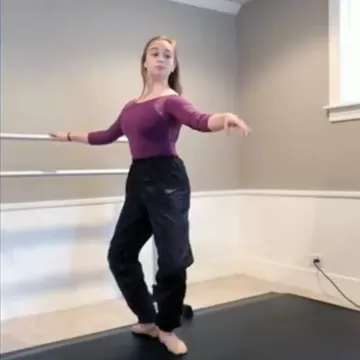 Some people prefer adding a cushioned layer under the marley for the basement dance studio layout. Professional dancer Timmorie Freeman of Chicago created a home studio using the Dance Studio Subfloor Elite kit.
Some people prefer adding a cushioned layer under the marley for the basement dance studio layout. Professional dancer Timmorie Freeman of Chicago created a home studio using the Dance Studio Subfloor Elite kit.
This kit consists of a layer of plyometric rubber and a layer of modular court tiles, providing plenty of cushioning and support. Then add a high quality roll of marley separately over the top, such as the Rosco Adagio Marley Dance Floor.
“The marley is great,” she said. “It’s a good quality and not too slick. The subfloor most closely resembles being in a studio. Any pains I had from dancing on tile were eased within one class on the subfloor. I can jump, turn, and dance without worrying.”
